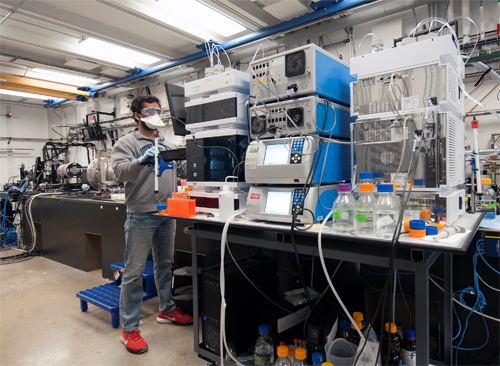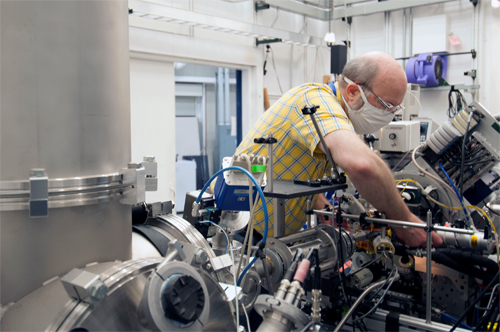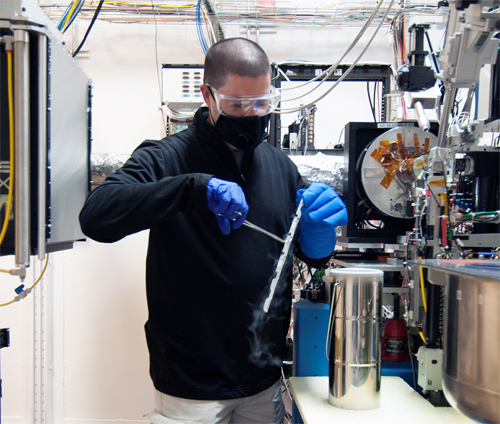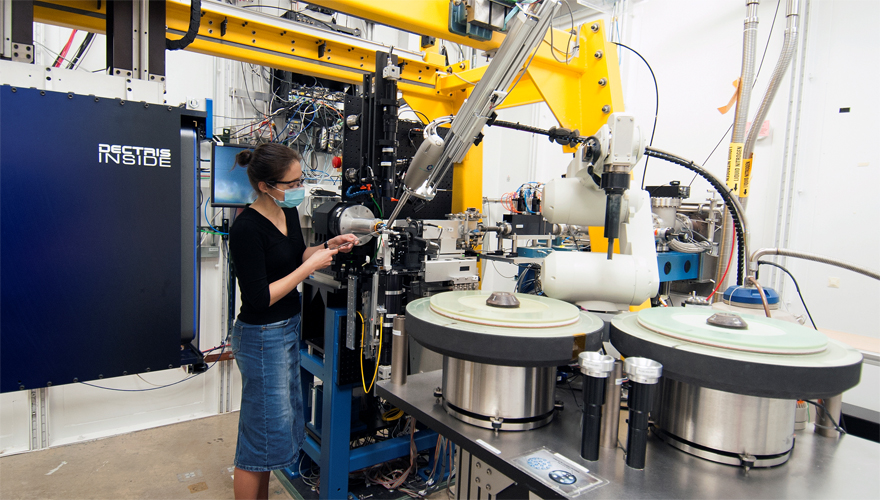When the crisis represented by COVID-19 became apparent, the world’s x-ray light sources, including the user facilities funded by the U.S. Department of Energy's (DOE's) Office of Science, were quick to begin hosting essential studies of the SARS-CoV-2 virus, which causes COVID-19, in the quest to develop medical therapeutics to combat the disease. The DOE's Advanced Photon Source (APS) at Argonne National Laboratory, the groups who operate x-ray facilities there, and the researchers who use those facilities were among the first to divert experimental resources to these critical investigations.
With Argonne in minimum safe operations mode and the site closed to researchers (users) and all but essential Argonne staff, all of the science performed at the APS from March through May 2020 has been devoted to using the APS’ ultra-bright x-rays for studying the structure of inert proteins from the coronavirus, including preparation of samples at the Argonne Advanced Protein Characterization Facility. Users are controlling the studies remotely via network-based interfaces or mailing-in crystals to be mounted in the beamline by staff who must wear masks and maintain proper social distancing at all times.
At the time of this writing (June 9, 2020) users working at 16 different APS x-ray beamlines have deposited a total of 45 structures at Protein Data Bank (https://www.rcsb.org/), the worldwide repository where macromolecular protein structures can be freely accessed and studied for clues to research avenues for new or improved pharmaceuticals.
Groups currently operating APS beamlines where SARS-related research is ongoing include: the Biophysics Collaborative Access Team (CAT), the DuPont-Northwestern-Dow CAT, the Industrial Macromolecular Crystallography Association CAT, the Life Sciences CAT, the Lily Research Laboratories CAT, the National Institute of General Medical Sciences and National Cancer Institute structural biology facility, the Northeastern CAT, the Southeast Regional CAT, the Structural Biology Center (SBC-XSD) and imaging beamlines under the X-ray Science Division.
“This is exactly the kind of research that can only be carried out at our national laboratories like Argonne and research facilities like the APS and the other DOE-operated x-ray light sources,” said Stephen Streiffer, APS Director and Argonne Associate Lab Director. “Scores of academic, industrial, and government researchers from around the nation; highly skilled scientific and technological people at the facilities; and massive, complex scientific instruments, are all focused on a single objective: supporting the search antivirals, antibody therapies, and vaccines.”







Produced by Richard Fenner (Argonne Photon Sciences Directorate)
Robert Fischetti (GM/CA-XSD, Argonne X-ray Science Division)
Andrzej Joachimiak (SBC-XSD, Argonne X-ray Science Division)
This research used resources of the Advanced Photon Source, a U.S. DOE Office of Science User Facility operated for the DOE Office of Science by Argonne National Laboratory under Contract No. DE-AC02-06CH11357.
Argonne National Laboratory seeks solutions to pressing national problems in science and technology. The nation's first national laboratory, Argonne conducts leading-edge basic and applied scientific research in virtually every scientific discipline. Argonne researchers work closely with researchers from hundreds of companies, universities, and federal, state and municipal agencies to help them solve their specific problems, advance America's scientific leadership and prepare the nation for a better future. With employees from more than 60 nations, Argonne is managed by UChicago Argonne, LLC, for the U.S. DOE Office of Science.
The U.S. Department of Energy's Office of Science is the single largest supporter of basic research in the physical sciences in the United States and is working to address some of the most pressing challenges of our time. For more information, visit the Office of Science website.
